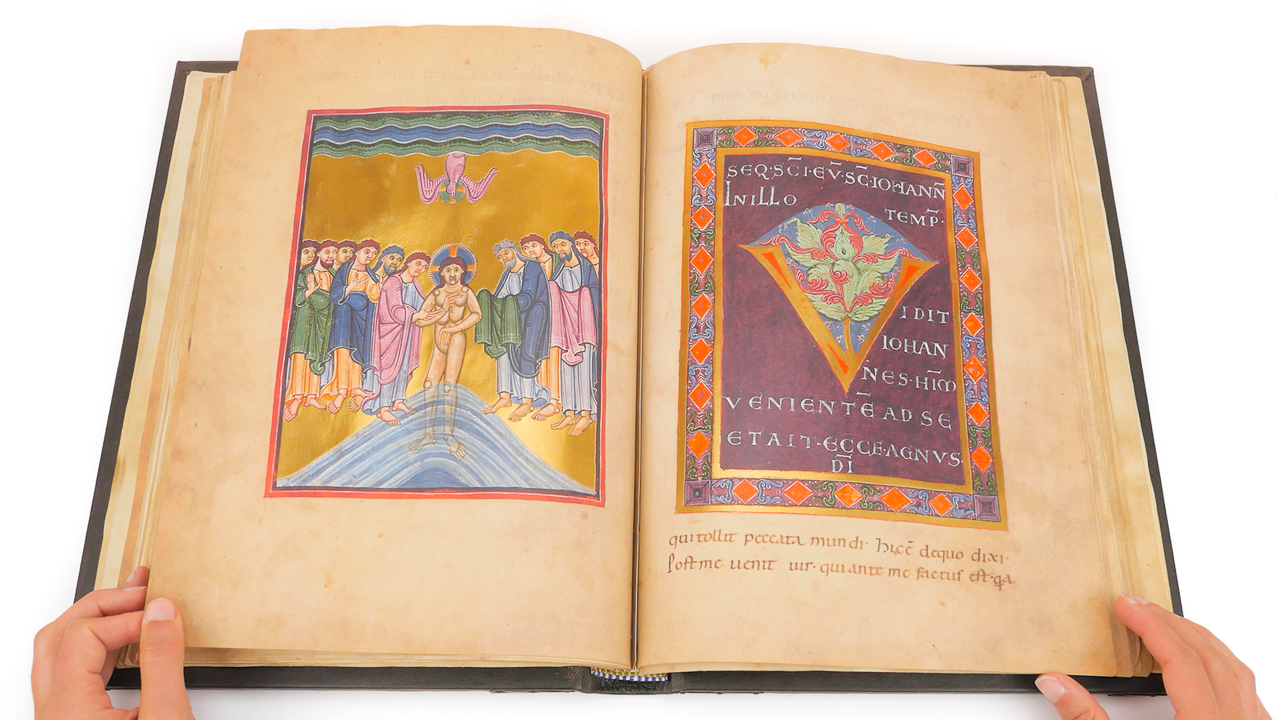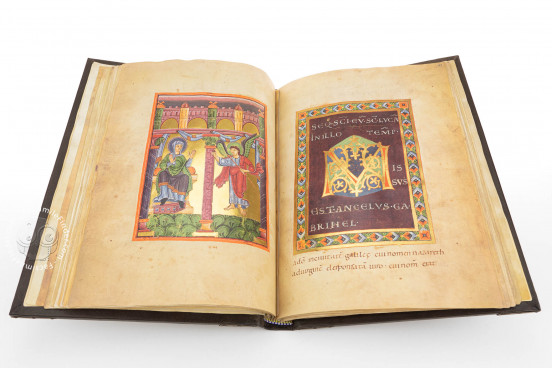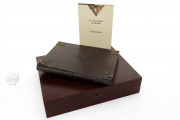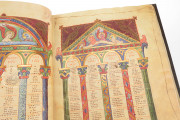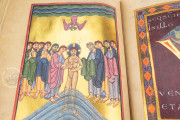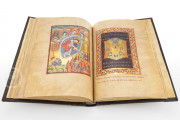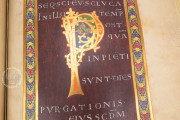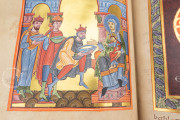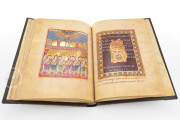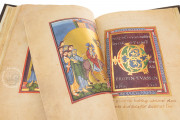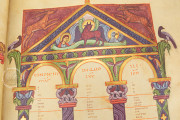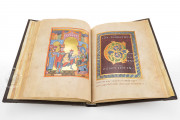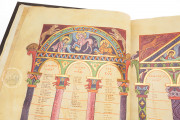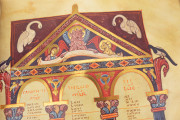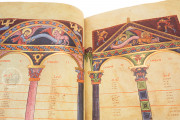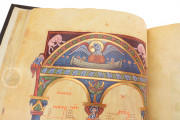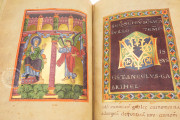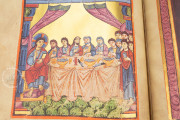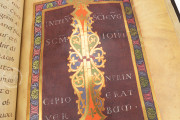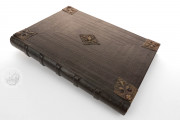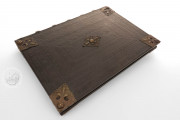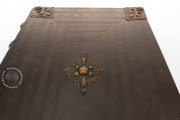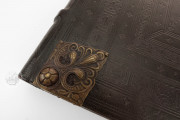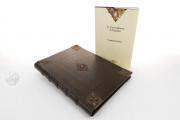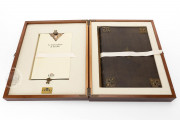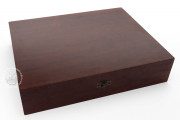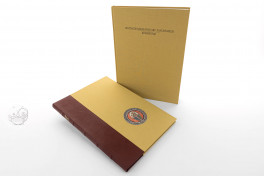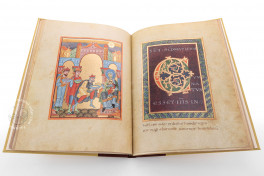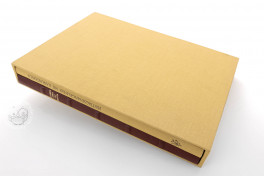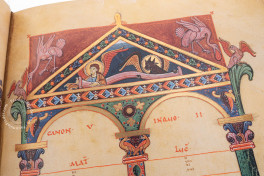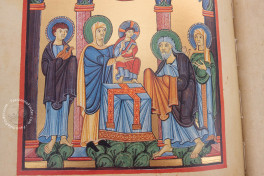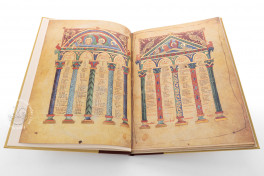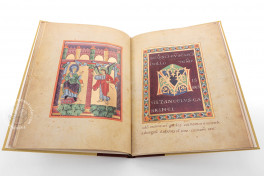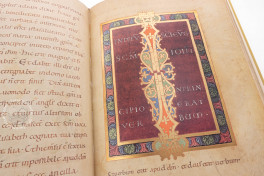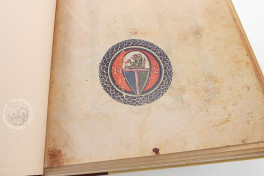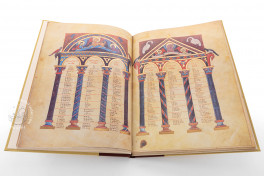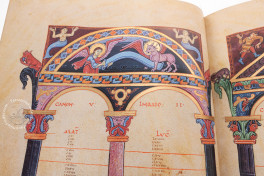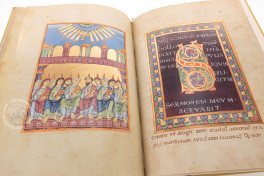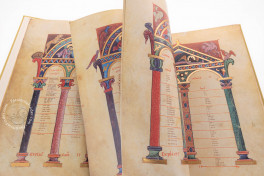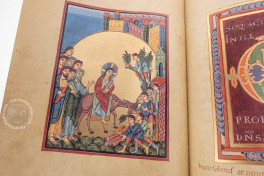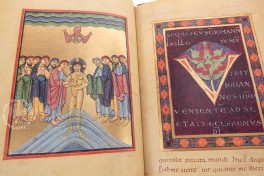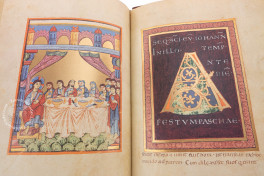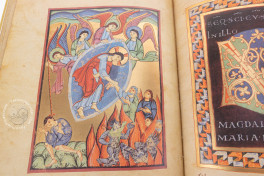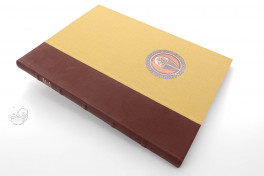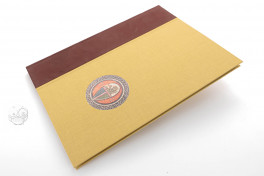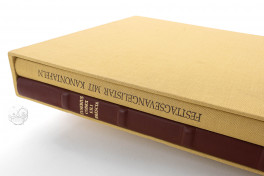The School of Reichenau produced numerous priceless masterpieces. Among them is a manuscript now preserved in Brescia's Queriniana Library, the so-called Brescia Gospel Lectionary. With its extraordinary full-page miniatures, initials, and detailed canon tables, this codex is truly one-of-a-kind.
A Deluxe Codex Reminiscent of Antiquity
The manuscript contains nineteen folios displaying nineteen skilfully penned 'arches' that frame the canon tables, or Gospel Harmony written by Eusebius in the fourth century AD.
Each page is filled with numerous luxurious decorations: each column is completely different from the other; architectural gables and arches, which draw their inspiration from Classical Antiquity, contribute in creating a perfectly harmonious composition.
The Reichenau School and Its Style
The Gospel Pericopes, which come right after the first section, include eleven full-page miniatures but also twelve luxurious initials which introduce the different readings for feast days, one facing the other.
The Brescia Gospel Lectionary is a deluxe codex, something witnessed by the various initials set on purple background that open the single readings. The lively orange touches are also a 'lively' trademark of the Ottonian illumination style in which these books were produced at Reichenau.
Ottonian Book Illumination at Its Best
This copy of the Brescia Gospel Lectionary is seldom mentioned in scholarly literature, possibly because it is preserved in a somewhat 'remote' place. However, scholars hold it in great esteem: its forty-two miniatures and initials, all penned in shining gold, are to be seen as one of the best examples of Ottonian book creation.
We have 2 facsimiles of the manuscript "Brescia Gospel Lectionary":
- Evangelienharmonie des Eusebius facsimile edition published by Akademische Druck- u. Verlagsanstalt (ADEVA), 1991
- Concordanze di Eusebio facsimile edition published by De Agostini/UTET, 2006

